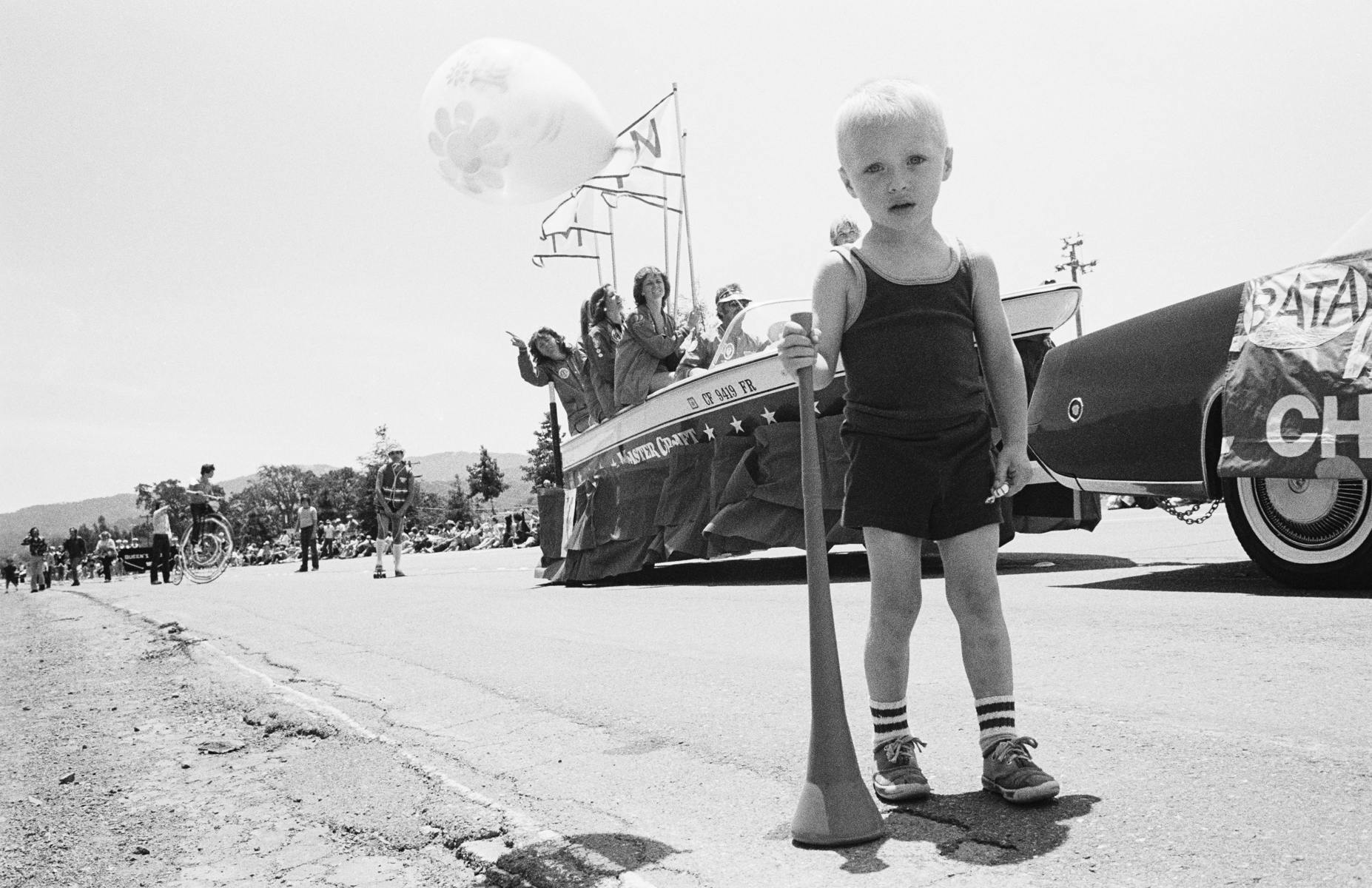Woman Crush Wednesday: Mimi Plumb
Like Magic, 1975 ©Mimi Plumb, Courtesy of Robert Koch Gallery
Interview by Kehan Lai
What kinds of research have you done before shooting this project?
Suburbia was the landscape of my childhood. Growing up in the 1950s and 60s in Walnut Creek, a suburb of San Francisco, was my research. I used that experience when I returned in the 1970s to photograph various suburban enclaves surrounding the city.
How do you see the landscape photographs in this series interact with other photos that feature people and community? Does that interaction create another layer of meaning?
The starkness of the landscape hurt my eyes. The low brown hills coated with dry grass, scratching my ankles, fox tails caught in my socks. I was always looking for a place to hide from the sun. The raw dirt yards and treeless streets, model homes expanding exponentially, with imperceptible variation. At 13 my friends and I wore faded 501 jeans, torn at the knees, white t-shirts, and long straight hair parted down the middle. We wandered around the walnut festival, hiding in corners, smoking cigarettes, looking for stuff to do. In this series, I wanted to show the people and places that spoke to my childhood experience.
House and Willow,1976 ©Mimi Plumb, Courtesy of of Robert Koch Gallery
Boy and Peppermint, 1975 ©Mimi Plumb, Courtesy of of Robert Koch Gallery
Girl in the Mirror, 1972 ©Mimi Plumb, Courtesy of of Robert Koch Gallery
For photographers, selecting and sequencing the images take a huge part in how the meaning of the project comes across. Is there any criteria you adopt in terms of the photo-selecting process? Are you looking for certain elements such as confrontation and emotional nuances?
Editing and sequencing for me always comes from the content of what I’m photographing. In this case, what did my experience in suburbia look and feel like. I hope the pictures of landscapes and people speak to that.
I found an article in British Journal of Photography saying that you photographed this series in your mid-20s. Has your perception towards the photograph this project changed over the years?
I started photographing suburbia in 1971 when I was 18 and continued photographing there off and on through my mid-20s. I don’t think my perception of suburbia changed over the years. Looking at the work 40 years later was similar to looking at a personal diary, a visual diary of my experience.
House and Ivy,1976 ©Mimi Plumb, Courtesy of of Robert Koch Gallery
Man at Black Diamond Mines,1976 ©Mimi Plumb, Courtesy of of Robert Koch Gallery
Two Girls at the Walnut Festival, 1975 ©Mimi Plumb, Courtesy of of Robert Koch Gallery
Women Crush Wednesday Questionnaire:
Describe your creative process in one word.
Curiosity
If you could teach a one-hour class on anything, what would it be?
In my hundreds of hours of teaching photography, it always boiled down to encouraging people to pay attention to what is of interest to them, and to explore that visually.
What was the last book you read or film you saw that inspired you?
Barbarian Days, A Surfing Life, by William Finnegan, a great coming-of-age story.
What is the most played song in your music library?
Ain’t No Love, David Gray
How do you take your coffee?
With steamed milk and sugar
You can find more of Mimi’s work here.
Woman at Black Diamond Mines,1976 ©Mimi Plumb, Courtesy of of Robert Koch Gallery














